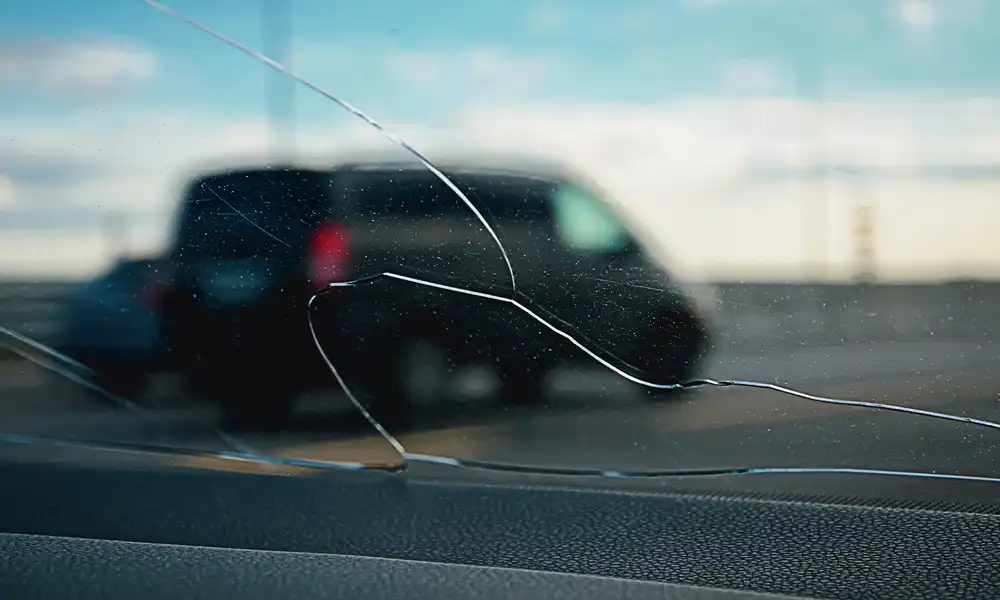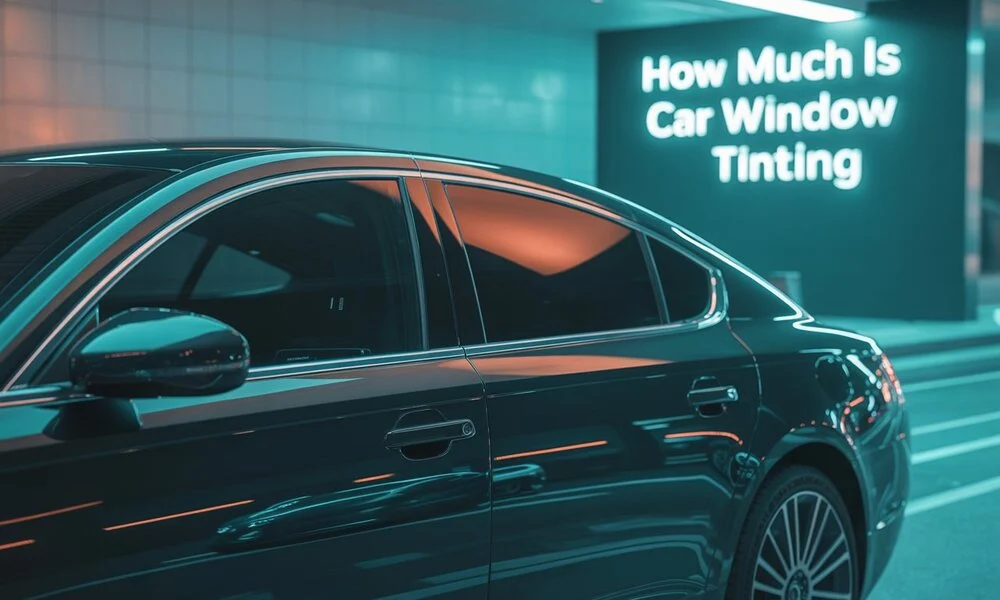You’re driving down the highway when suddenly, a rock kicks up and hits your windshield. That tiny chip might seem harmless now, but it can quickly turn into a major problem. A small chip can spread into a massive crack within days, especially with temperature changes and road vibrations.
Learning how to repair chipped windshield damage early can save you hundreds of dollars and keep you safe on the road. This guide walks you through everything from DIY repair methods to knowing when professional help is necessary.
Understanding Windshield Chips
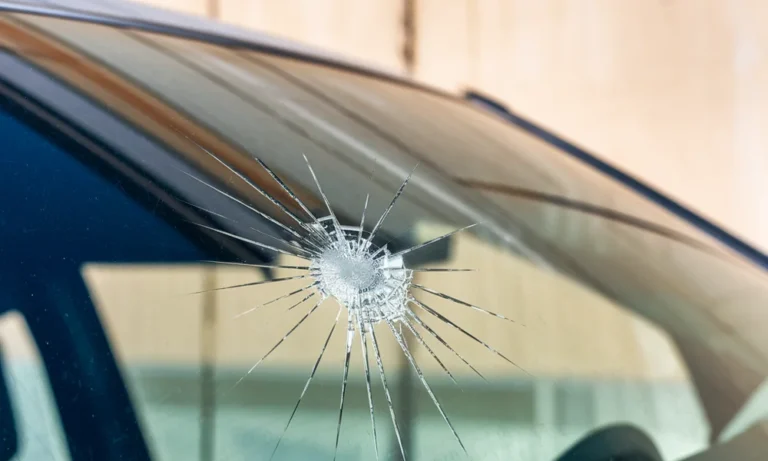
A windshield chip is a small piece of damaged glass on your windshield’s surface. These chips usually happen when rocks, gravel, or road debris hit your windshield while driving.
Types of Windshield Chips
Different chips need different repair approaches. Here are the most common types:
Bull’s Eye Chips: These look like a circular crater with a dark center. They’re usually caused by round objects hitting the glass.
Star Breaks: These chips have multiple cracks spreading out from the center point. They look like a star pattern and can spread quickly.
Combination Breaks: These mix features from different chip types. They’re more complex to repair.
Partial Bull’s Eye: Similar to a bull’s eye but only partially circular. These are easier to fix than full bull’s eyes.
Size Matters
The size of your chip determines if you can fix it yourself. Chips smaller than a quarter are usually repairable. Anything larger needs professional help. A cracked windshield with damage bigger than a dollar bill typically requires full replacement.
Location Is Critical
Where the chip sits on your windshield matters. Chips directly in your line of sight need extra care. Damage near the windshield edges is more serious because these areas provide structural support. Edge chips can spread faster and compromise your vehicle’s safety.
How to Repair Chipped Windshield in 7 Easy Steps
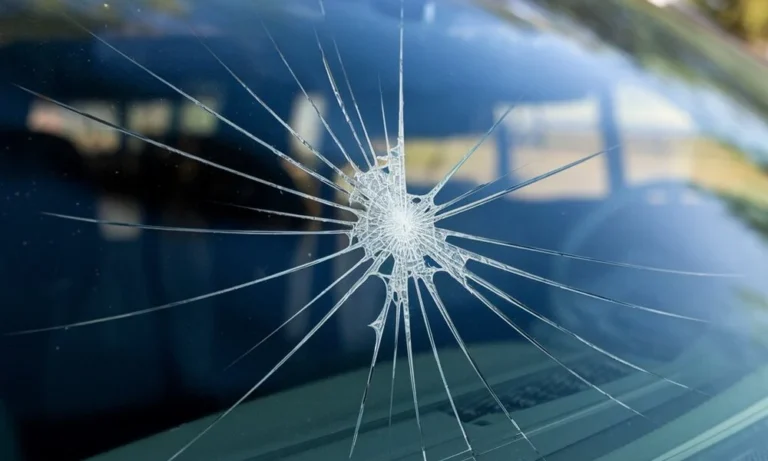
Fixing a small chip yourself is possible with the right tools and patience. Here’s exactly how to do it.
Step 1: Assess the Damage
First, look closely at the chip. Measure it with a ruler. If it’s smaller than a quarter and not at the edge, you can probably fix it yourself. Check if the chip has penetrated both layers of glass. If it has, call a professional.
Clean the area gently with a dry cloth. Look for any loose glass pieces. Take a photo of the chip from different angles. This helps you track if it spreads.
Step 2: Gather Your Repair Kit
You’ll need a windshield repair kit from any auto parts store. Good kits cost between $10 and $20. They include resin, an applicator, curing strips, and a razor blade.
Make sure you have these items ready:
- Windshield repair resin
- Applicator or syringe
- Curing film or strips
- Razor blade
- Glass cleaner
- Paper towels
- Tape
Step 3: Clean the Chip Thoroughly
Clean the damaged area with glass cleaner. Remove all dirt, dust, and moisture. Any debris left inside will show through the repair. Use compressed air if you have it. This blows out tiny particles you can’t see.
Let the area dry completely. Even small amounts of moisture will prevent the resin from bonding properly. Wait at least 15 minutes after cleaning.
Step 4: Apply the Resin
Follow your kit’s instructions carefully. Most kits work similarly but have slight differences. Place the applicator over the chip. Make sure it creates a tight seal.
Fill the applicator with resin. The resin fills the chip and bonds the glass together. Apply steady pressure to push resin deep into the crack. You might see air bubbles come out. This is normal and means the resin is filling the space.
Keep pressure on for several minutes. The longer you maintain pressure, the better the resin penetrates. Some kits recommend 10 minutes, others say 5. Follow your specific kit’s timing.
Step 5: Remove Air Bubbles
Air bubbles are your enemy in windshield crack repair. They create weak spots and make the repair visible. Tap the applicator gently to help bubbles rise. Apply and release pressure several times. This pumping action forces out trapped air.
Watch the chip closely. You should see the resin become clearer as air escapes. If bubbles persist, add more resin and repeat the pressure cycle.
Step 6: Cure the Resin
Remove the applicator once the chip is full of resin. Place a curing strip over the repair. These strips are usually clear plastic. They keep the resin level and protect it while it hardens.
Move your car into direct sunlight. UV light from the sun cures the resin. Most resins need 15 to 30 minutes of sun exposure. Check your kit’s instructions for exact timing.
If it’s cloudy or nighttime, some kits include UV lamps. You can also wait until morning to cure the repair properly.
Step 7: Finish and Polish
After curing, remove the curing strip carefully. There will likely be a small bump of excess resin. Use the razor blade from your kit to scrape it off. Hold the blade at a 45-degree angle and scrape gently. Don’t press too hard or you’ll scratch the glass.
Clean the area with glass cleaner. Buff it with a clean cloth. The repair should feel smooth to the touch. It might be slightly visible, but it will be much less noticeable than the original chip.
What Happens If You Ignore It
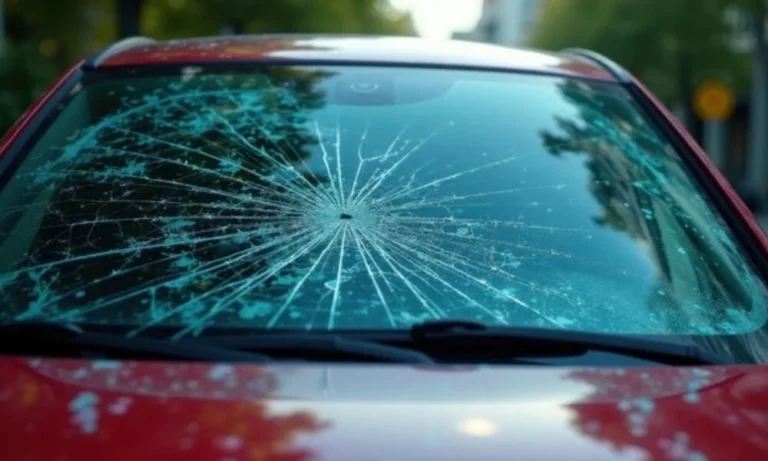
Ignoring a small chip leads to expensive problems. Here’s what happens when you don’t fix windshield glass damage quickly.
Chips Turn Into Cracks
Temperature changes cause glass to expand and contract. A small chip creates a weak point. When your windshield expands or contracts, stress concentrates at the chip. This turns a tiny chip into a long crack.
Even a 10-degree temperature change can cause spreading. Going from a cold morning to a hot afternoon puts stress on damaged glass. Running your defroster on high makes it worse.
Cracks Spread Fast
Once a chip becomes a crack, it grows quickly. Cracks can spread several inches in just one day. Road vibrations accelerate the spread. Every bump and pothole makes the crack longer.
A cracked windshield that crosses your field of vision is illegal in most states. You can get ticketed during traffic stops. The crack also blocks your view and creates a safety hazard.
Water Damage
Chips and cracks let water seep into your windshield’s layers. This moisture gets trapped between the glass layers. It creates cloudy spots that never dry out. Water damage makes the windshield weaker and harder to see through.
In freezing weather, trapped water expands. This expansion can shatter your entire windshield overnight.
Failed Inspections
Most states require windshields to pass safety inspections. A chipped or cracked windshield will fail. You won’t be able to register your vehicle until you fix or replace the windshield. This turns a $20 DIY repair into a $300+ replacement.
Safety Risks
Your windshield provides up to 45% of your vehicle’s structural strength in a rollover crash. A damaged windshield can’t provide this protection. In an accident, a weakened windshield might collapse or pop out. This puts everyone in the vehicle at serious risk.
Airbags also rely on the windshield. The passenger airbag bounces off the windshield to work correctly. A cracked windshield might not support the airbag properly.
Why Professional Repair Is Better
DIY repairs work for small, simple chips. But professional repair offers major advantages.
Advanced Equipment
Professional shops use vacuum pumps and pressure injectors. These tools remove all air from the chip before filling it with resin. This creates a stronger, clearer repair. Home kits can’t match this level of air removal.
Professionals also use higher-quality resin. Their resin is clearer and bonds stronger than kit resin. The repair becomes nearly invisible.
Experience Matters
Technicians repair dozens of windshields every week. They’ve seen every type of chip and know exactly how to fix each one. They can assess damage you might miss. Sometimes what looks like one chip is actually several small chips that need individual treatment.
Professionals know when a chip can’t be repaired. They’ll tell you honestly if you need replacement instead. This saves you from wasting time on a repair that won’t hold.
Warranty Protection
Professional repairs come with warranties. If the repair fails or the chip spreads, they’ll fix it again for free. Some shops offer lifetime warranties. DIY repairs have no warranty. If your repair fails, you start over and buy another kit.
Insurance Coverage
Most insurance companies cover professional windshield repair with no deductible. Your rates won’t increase for a glass claim. This means professional fixing windshield chips costs you nothing out of pocket. Many shops handle the insurance paperwork for you.
Time Savings
A professional can complete a repair in 30 minutes. You don’t need to buy supplies, watch tutorials, or worry about mistakes. You drive in with a chip and leave with a repaired windshield.
How Much To Repair Windshield Chip In Austin
Repair costs vary based on chip size and location. In Austin, Texas, expect to pay between $50 and $150 for professional repair. Multiple chips cost more, usually $10 to $20 per additional chip.
Many Austin shops offer mobile service. They come to your home or office and fix your windshield while you work. Mobile service typically adds $20 to $30 to the cost.
For reliable Windshield Chip Repair in Austin Texas, local shops charge competitive rates. Most repairs take less than an hour. Same-day service is standard in the Austin area.
Insurance and Cost
Check your auto insurance policy before paying out of pocket. Most comprehensive coverage includes glass repair with zero deductible. Your insurance company prefers paying for repairs over replacements. Repairs cost them $100 while replacements cost $500 or more.
Call your insurance company and ask about glass coverage. They’ll tell you which shops are in their network. Using a network shop usually means no paperwork or upfront payment.
DIY Cost Comparison
DIY windshield repair kits cost $10 to $30. You save money on the initial repair. But if your DIY repair fails, you’ll need professional help anyway. Then you’ve spent money on both the kit and the professional repair.
Professional repair costs more upfront but guarantees results. With insurance coverage, professional repair often costs nothing. This makes DIY repair less attractive financially.
Final Tips to Prevent Future Chips
Prevention is easier than repair. Here’s how to protect your windshield.
Maintain Safe Distance
Stay back from trucks and vehicles carrying loads. Rocks and debris fall from these vehicles constantly. Keep at least four car lengths between you and the vehicle ahead. Give yourself time to avoid flying debris.
On highways, stay out of the right lane when possible. Trucks use the right lane and throw up more rocks. The left lane is generally cleaner.
Avoid Gravel Roads
Gravel roads are hard on windshields. Every car that passes kicks up stones. If you must drive on gravel, go slowly. Slower speeds mean rocks hit with less force. Give oncoming traffic plenty of space.
Fix Chips Immediately
Fix small chips within 24 hours of noticing them. Quick repairs prevent spreading. The longer you wait, the more likely the chip will turn into a crack. Set a reminder to check your windshield monthly.
Use Quality Wiper Blades
Old wiper blades develop metal edges. These edges can scratch your windshield and create weak spots. Replace your wipers twice a year. Good wiper blades cost $20 to $40 per pair and last six months.
Park Smart
Park in covered areas when possible. Direct sunlight heats your windshield unevenly. This uneven heating can cause existing chips to crack. Covered parking also protects your windshield from hail and falling branches.
Avoid parking under trees. Falling acorns, nuts, and branches can chip your windshield. Tree sap also damages glass if left too long.
Apply Glass Treatment
Consider applying a glass treatment product. These treatments fill microscopic pits in your windshield. This makes the surface harder and more resistant to chips. Treatments cost $20 to $40 and last about six months.
You can read about: How Much Is It To Repair A Windshield Crack
Conclusion
Fixing windshield chips promptly protects your safety and your wallet. Small chips are easy and cheap to fix, whether you choose DIY or professional repair. The key is acting fast before the damage spreads.
Remember that professional repair offers better results than DIY for most situations. The equipment and expertise make a real difference in repair quality and longevity. Most insurance policies cover chip repair with no deductible, making professional service the smart choice.
If you’re in the Austin area and need reliable windshield repair,Texas Reliable Auto Glass provides expert service with quality materials and experienced technicians. Don’t let a small chip become a major expense. Get it fixed today and drive safely tomorrow.
FAQs
Can you fix a windshield chip yourself?
Yes, you can fix small chips yourself using a repair kit. The chip must be smaller than a quarter and not at the windshield’s edge. DIY repairs work best on simple bull’s eye chips. Complex star breaks or large chips need professional repair.
How long does a windshield chip repair take?
A DIY repair takes about one hour including prep time and curing. Professional repairs take 30 minutes or less. Most of the time is spent waiting for the resin to cure in sunlight.
Can a chip turn into a crack overnight?
Yes, temperature changes overnight can turn chips into cracks. Cold weather is especially risky. If temperatures drop below freezing, moisture in the chip can expand and cause cracking. Fix chips before the weather changes.
What size chip is too big to repair?
Chips larger than a quarter typically need professional assessment. Anything bigger than a dollar bill usually requires windshield replacement. The chip’s location also matters. Edge chips and chips in your direct line of sight might need replacement even if they’re small.
How do you stop a windshield chip from spreading?
Apply clear tape over the chip immediately. This keeps dirt and moisture out. Avoid temperature extremes. Don’t use your defroster on high and keep your car out of direct sunlight. Get the chip repaired within 24 hours.



